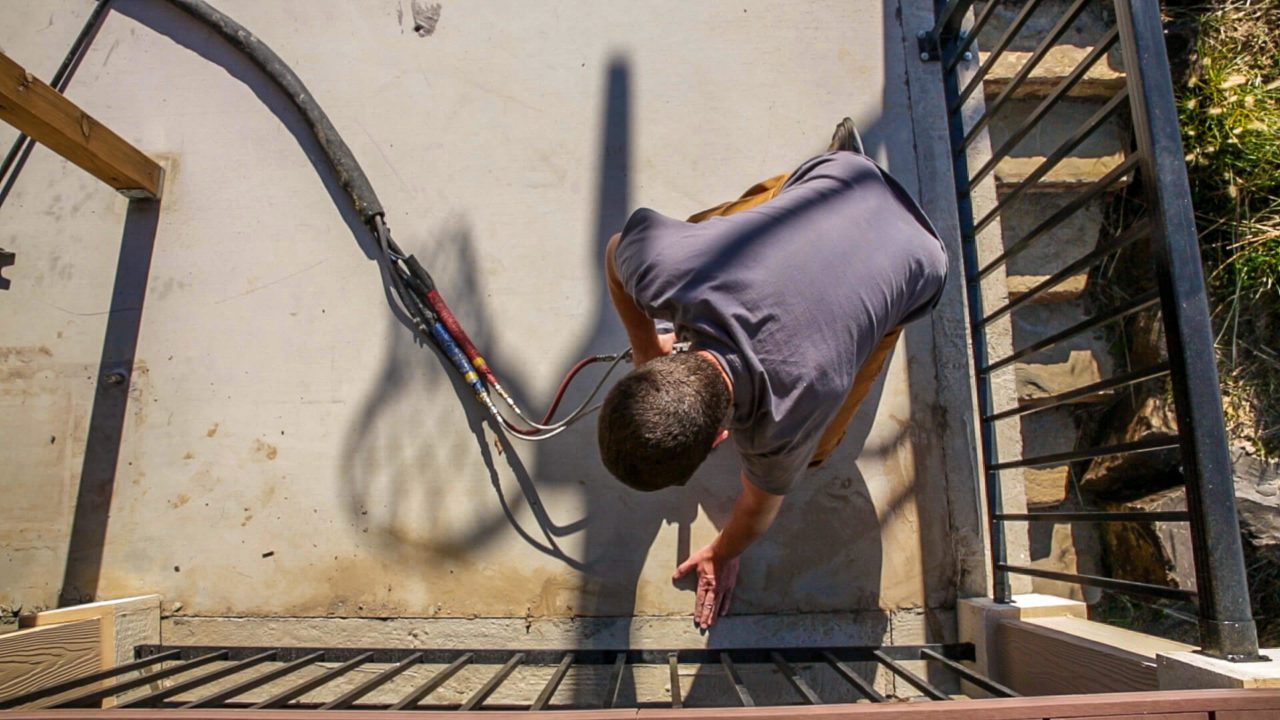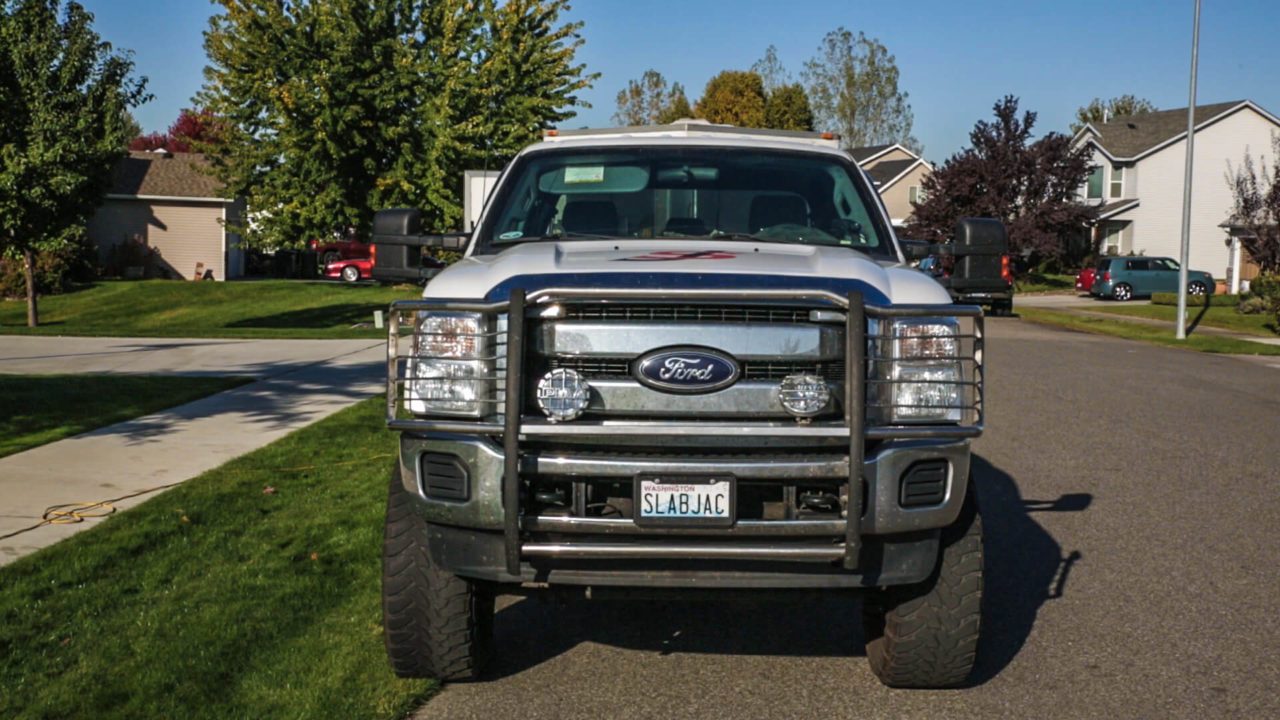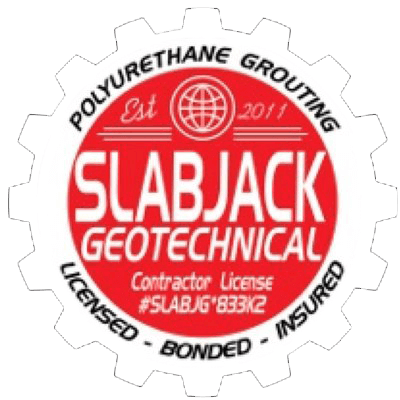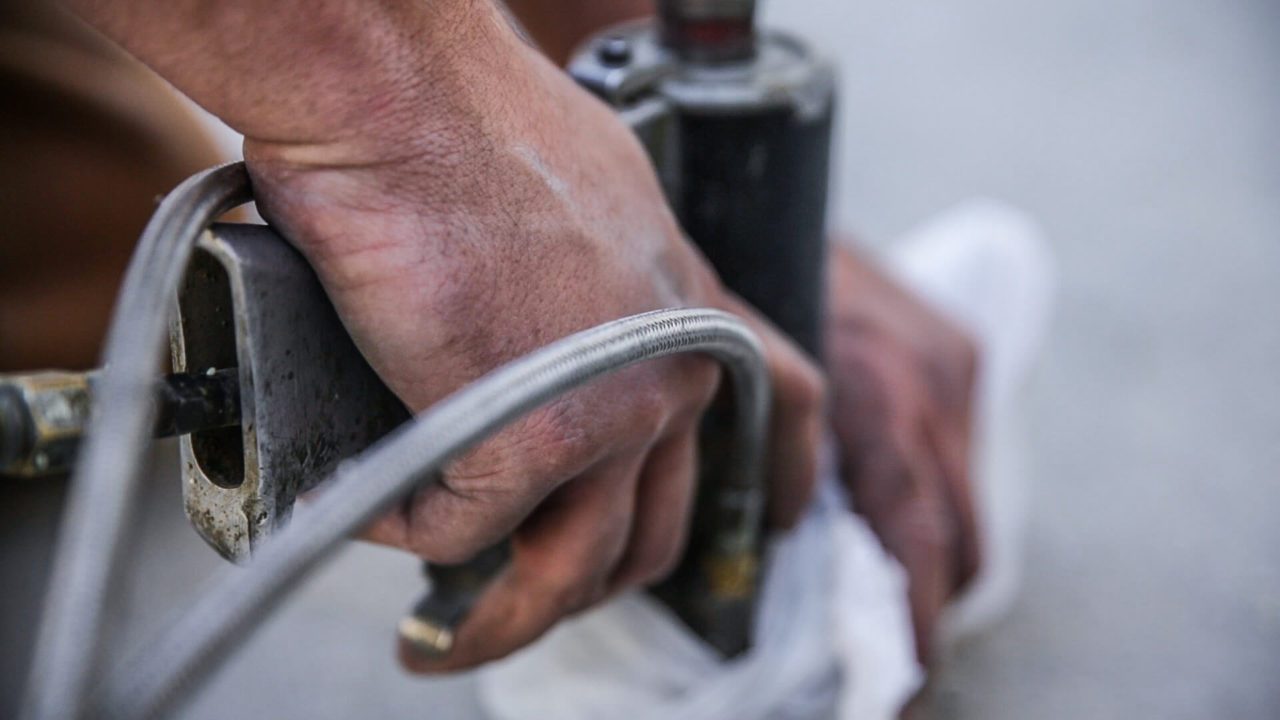Have you ever walked across a concrete slab only to find it sinking and uneven? If so, you know how frustrating this can be, especially if you aren’t sure how to raise a concrete slab. It can be even worse when the sinking slab is part of your driveway or patio area. Fortunately, there are different methods available to raise a concrete slab and make it level again.
In this article, we will explore the reasons why concrete sinks and the different methods for raising a concrete slab. From mud jacking/pressure grouting to foam jacking/polyurethane injection, learn everything you need to know about how to raise a concrete slab!
If you are in need of an experienced team to raise your concrete slabs, our team here at Slabjack Geotechnical has you covered.
Why Concrete Sinks
Concrete is a durable and widely used construction material due to its strength, durability, and versatility. However, despite its sturdiness, concrete can still sink over time. There are several reasons why concrete may sink, including:
- Soil compaction: Over time, the soil beneath concrete slabs can become compacted due to the weight of the concrete itself or heavy equipment passing over it. As the soil compresses, it creates voids beneath the concrete, causing it to sink.
- Erosion: Water erosion is another common cause of sinking concrete. When water flows beneath the concrete, it can wash away the soil and create voids, which in turn can cause the concrete to sink.
- Poor drainage: If the drainage system around a concrete slab is not functioning properly, water can accumulate beneath the concrete, leading to erosion and eventual sinking.
- Tree roots: Trees located near concrete slabs can send out roots that grow beneath the concrete, causing it to heave and crack. Over time, the roots can also cause the soil to become compacted and create voids, which can contribute to sinking.
- Poor installation: If the concrete slab was not installed properly, with sufficient support and reinforcement, it may be more prone to sinking over time.
To prevent sinking concrete, it is important to address these issues as soon as possible by raising and reinforcing the concrete slab.

Why and How to Raise a Concrete Slab?
Raising a concrete slab is important for two primary reasons. First, it can help improve the safety of your home or business. Uneven slabs can cause tripping hazards and make it difficult to move furniture and equipment around. Second, raising a concrete slab can also help preserve its aesthetic value. Cracks and unevenness in the surface can detract from the overall appearance of an outdoor space, making it look neglected and unappealing.
The process of raising a concrete slab is more than just a cosmetic procedure; it helps protect against further damage that could result from ground movement or heavy rains. Slabs that are raised back up to their original level will be less likely to develop cracks, which means they’ll be able to withstand more wear and tear before needing repairs or replacement. Raising a concrete slab also helps prevent water from pooling beneath it, which can cause further erosion or deterioration over time.
Overall, raising a concrete slab is an important part of preserving the safety of your home or business as well as its aesthetic appeal. Doing so requires careful consideration of how to best raise the slab without causing additional damage in the process. Professional contractors should be consulted whenever possible in order to ensure the job is done correctly and safely.
Different Methods for Raising Concrete Slabs
Raising a concrete slab can be done in several different ways. The most common methods include slab jacking, mud jacking, and foam jacking.
Slab Jacking
One of the most popular methods for raising a concrete slab is slab jacking. In this process, a jack is used to lift the slab off the ground.
Slab jacking is a more involved process than mud jacking, but it can be used when the slab needs to be raised higher off the ground. This method requires pumping cement under the slab in order to lift it up. The process starts with creating holes around the perimeter of the slab and then pumping a mix of sand, gravel, and cement underneath. As pressure is applied, the slab rises back up to its original height.
Slab jacking is a more expensive option than mud jacking, but it’s often necessary when the slab needs to be raised a greater distance off the ground. Additionally, this method can help preserve the integrity of the slab since it involves using a jack rather than just pumping material underneath.
Mud Jacking/ Pressure Grouting
Mud jacking, also known as pressure grouting, is a cost-effective and efficient way to raise and level concrete slabs. This process involves drilling holes into the slab, then pumping a mixture of sand, cement, and water (known as slurry) underneath the slab to raise and level it. This type of repair is ideal for sunken driveways or sidewalks that have become uneven due to ground movement or heavy rains.
Mud jacking is an effective solution because it is less expensive than replacing the entire concrete slab. It can also be completed much more quickly than other repair methods. The material used in mud jacking is strong enough to lift up even heavier slabs without any damage to the existing structure. Additionally, mud jacking helps prevent further wear and tear on the slab by restoring its original height.
When considering mud jacking for a concrete repair job, it’s important to hire a professional contractor who has experience with this type of work. Doing so will help ensure that the job is done correctly and safely without causing additional damage in the process.
Foam Jacking/ Polyurethane Injection
Foam jacking, or polyurethane injection, is another effective method for repairing sunken concrete slabs. This method involves drilling holes into the slab and injecting a polyurethane foam mixture beneath it. The expanding foam is able to lift the slab more slowly than mud jacking, but it is a great solution for lighter concrete slabs that may be damaged by the pressure of mud jacking. Foam jacking also has the benefit of being able to fill voids in the soil underneath the slab, creating a stronger foundation for lasting results.
Which Method is Best?

When choosing between slab jacking, mud jacking, and foam jacking, it’s important to consider your specific needs. Foam jacking is better suited for lighter slabs or areas with softer soils, while slab jacking and mud jacking can effectively lift heavier slabs and provide more stability in areas with harder soils.
Hiring a professional contractor experienced in these types of repairs will help you make an informed decision on which method is best based on your unique situation. Professional contractors will have access to the necessary equipment and materials needed for either repair job, ensuring that your slab is raised safely and effectively without causing additional damage in the process.
Tools & Materials – Raising Concrete Slab
There are a few basic tools and materials that are needed in order to raise a concrete slab. The most important of these is a foam jacking system, which is used to lift the slab into place. Other tools and materials that may be needed include a drill, screws, bolts, and a jack stand.
Depending on the type of slab that needs to be raised, other tools and materials may also be necessary. For example, if the slab contains embedded stones or masonry, then a chisel or hammer may be necessary in order to free them. Finally, if the slab contains water or other liquids, it will need to be drained before raising it.
Raising Concrete Slab – The Process
The process of raising a concrete slab using the slab jacking technique is a very technical process. It begins with a thorough assessment of the slab’s condition. A professional concrete contractor will inspect the slab to determine the cause of settling and assess its overall condition. This will help them determine if slab jacking is the right solution.
Once the assessment is complete, the contractor will drill small holes in the concrete slab. These holes will serve as access points for the slab jacking equipment. The number and placement of these holes will depend on the size and location of the slab, as well as the amount of settling that has occurred.
Next, the contractor will pump a slurry mixture of sand, cement, and water through the drilled holes under high pressure. The slurry will fill the voids beneath the slab and gently lift the slab back to its original position. The contractor will carefully monitor the pressure and flow of the slurry to ensure it is evenly distributed throughout the voids.
The slab jacking process is highly effective and has been used for decades to restore the level and stability of settling slabs. It is a reliable solution that can be performed quickly and efficiently by professional concrete contractors.
When compared to mudjacking/pressure grouting and foam jacking/polyurethane injection methods, slab jacking is typically the most cost-effective option. While mudjacking/pressure grouting can be effective for larger areas and foam jacking/polyurethane injection is highly precise, slab jacking is a reliable solution for most settling slab issues.
Raising the Concrete with Slabjack Geotechnical
Raising a concrete slab is a crucial aspect of maintaining the safety, functionality, and aesthetics of your property. Whether it’s a driveway, sidewalk, or foundation, settling concrete can lead to costly damages and even accidents. That’s why it’s essential to partner with an experienced concrete contractor who can efficiently and effectively raise your concrete slab.
Here at Slabjack Geotechnical, we have the knowledge, skills, and equipment to ensure that your concrete slab is lifted and leveled to the proper height, providing a long-lasting solution to settling issues. Don’t wait until it’s too late to fix your settling concrete – contact us today for a free consultation and take the first step towards a safer and more beautiful property.















